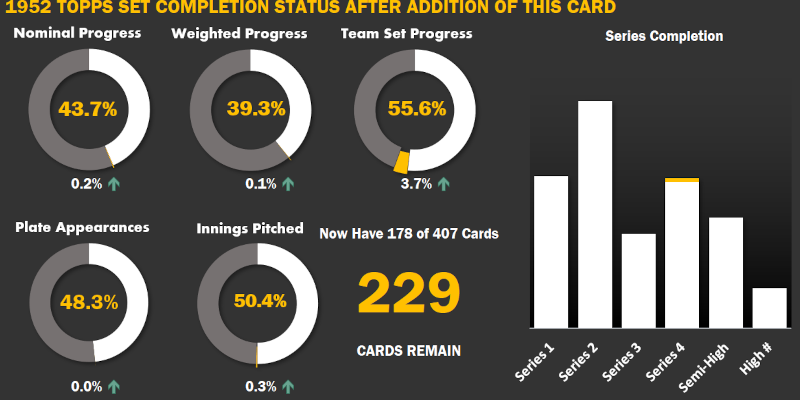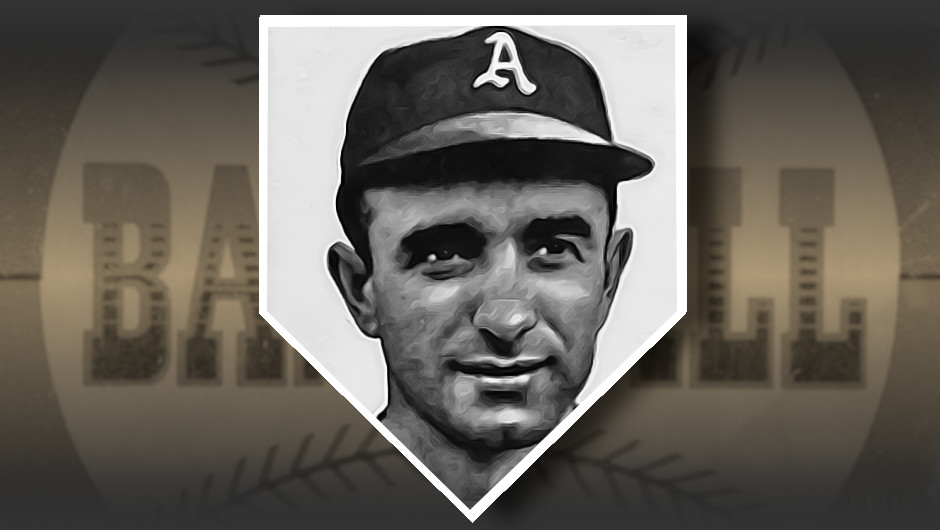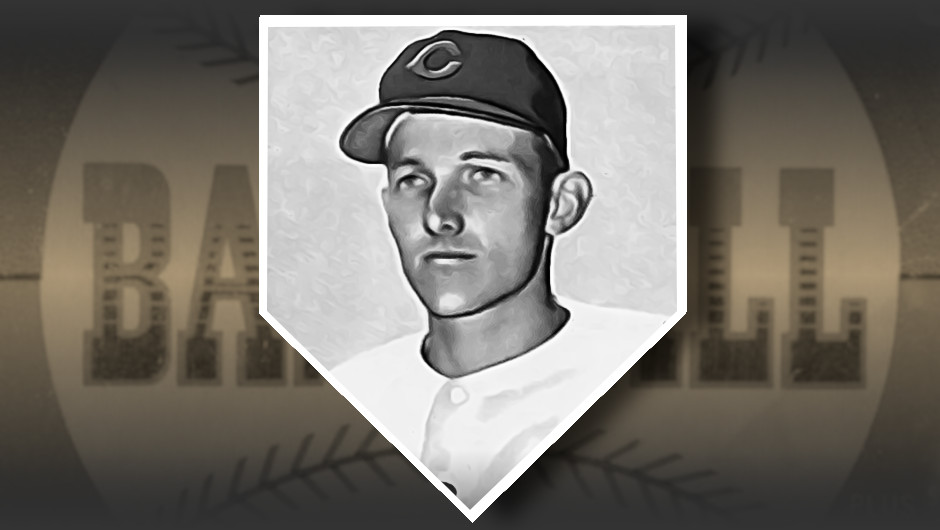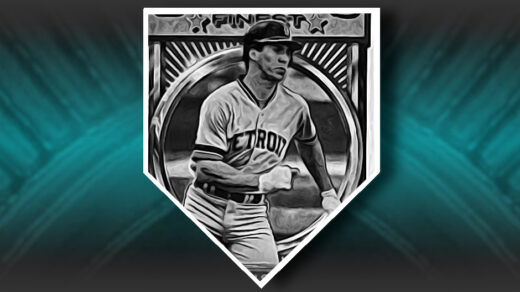For much of baseball history the physics behind some of the game’s more successful pitches were a mystery. The term “dark arts” could easily be used to describe what a pitcher needed to master in order to have regular command of a sinkerball, and the wizard who commanded one of the more interesting sinkers of the 1950s was George Zuverink.
A sinker is a fastball that usually drops half a foot or so more than a normal fastball. The movement of a sinker combined with the spin on the ball as it hurdles towards the batter typically induce a large percentage of ground balls. Ground balls are nearly impossible to turn into a home run, giving pitchers who master the sinker an edge against a catastrophic swing of the bat. Roy Halladay was a master of this and made it the cornerstone of a fantastic career.
The more extreme movement of a sinker makes it more difficult for batters to make contact with and its spin helps mitigate the outcome when batters finally get a hold of the ball. Pitchers with the ability to generate greater than average movement can find even more success with the pitch. Practitioners who throw with a sidearm motion find the effect of their sinker amplified.
George Zuverink threw with just such a delivery. Opponents noticed the additional movement on his throws, dubbing the combination of sidearm motion and sinker spin a “Zinkerball.” Ted Williams would bat just .100 against Zuverink for his career and Larry Doby batted only .172 against the Zinkerball.
Stamina would be a recurring issue for Zuverink, resulting in his eventual transition to bullpen work for the second half of his career. He found some of his best seasons anchoring late inning work for the Baltimore Orioles in the latter 1950s.
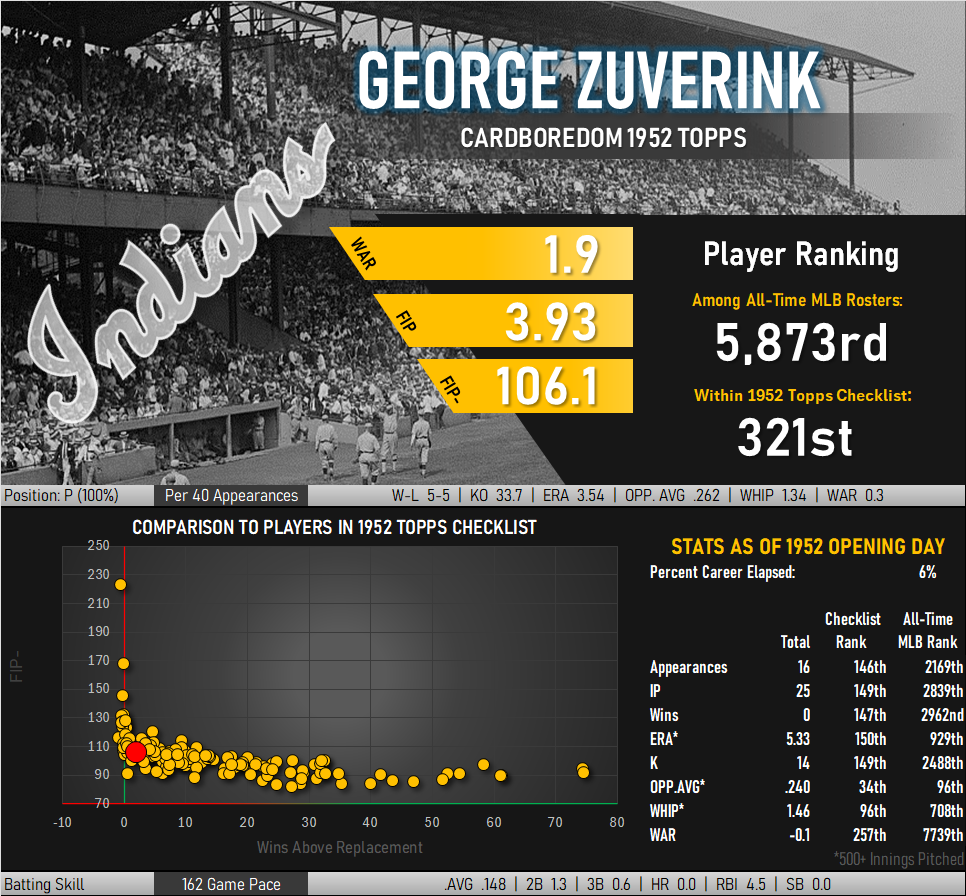
I added a George Zuverink to my in-progress 1952 set project with the card shown below. The card has some edge wear on the sides, particularly on the left, that is consistent with it having been stored in a stack of cards rubber banded together.
The text on the back mentions he played in Spartanburg in 1948. Spartanburg lies next door to Greenville in South Carolina, a town that was home to a much more famous alumnus of the Cleveland Indians. Shoeless Joe Jackson moved to the area in 1933 and ran a store until his death months before this card was produced. Joe Jackson’s Liquor Store was a stop for sporting luminaries traveling through the area, with Ty Cobb once famously asking Jackson if he remembered him. Given this backdrop, it is possible that Zuverink and his teammates may have crossed paths with Shoeless Joe.
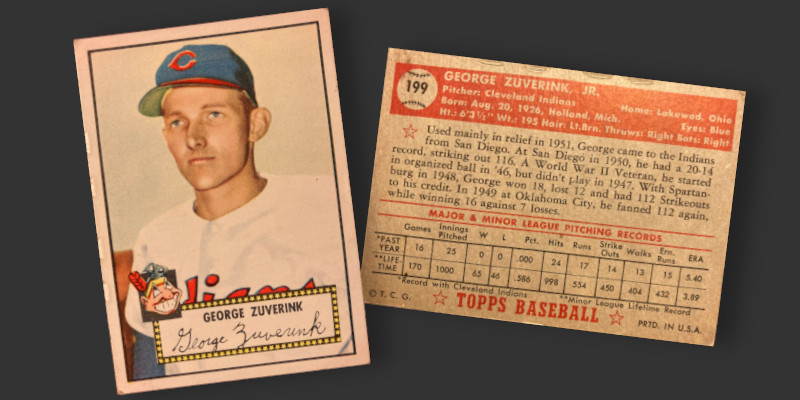
The addition of this card takes my set’s completion up to 43.7%, though it pushes the project solidly past the halfway point in terms of representing the total number of innings pitched by those portrayed in the ’52 checklist. The addition of this fourth series card also brings my Series 4 completion into a tie with the progress made to date on Series 1. I wonder which one will be completed first.
